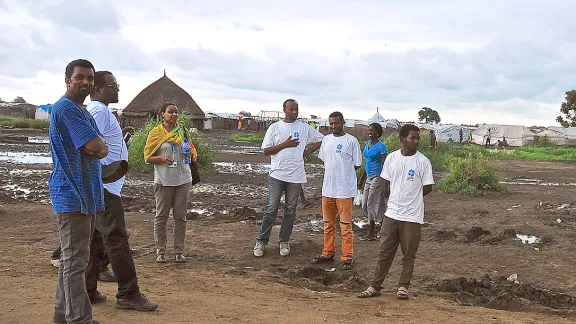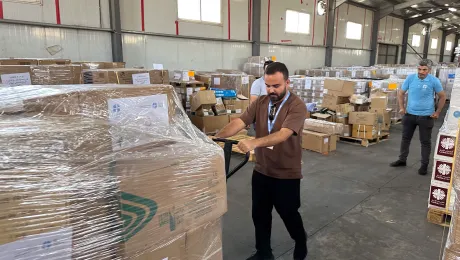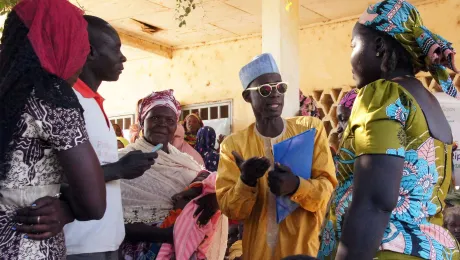
LWF team in the Gambella, Ethiopia, refugee camp. Photo: LWF/DWS Ethiopia
Health Risks from Cholera, Malaria and Hepatitis E
(LWI) – Together with the United Nations High Commissioner for Refugees (UNHCR) and its ACT Alliance partners, the Lutheran World Federation (LWF) has begun providing water and conducting hygiene and sanitation promotion to thousands of South Sudanese in flooded camps in Leitchuor refugee camp in western Ethiopia’s Gambella region.
The rains and floods pose serious public health threats such as cholera, malaria and Hepatitis E because latrines and sanitation facilities have collapsed. The floods are also affecting the border crossings at Matar and Pagak, the newly established camp of Nip Nip and Pamdong transit center, with many refugees making their way to dryer ground.
Close to 190,000 refugees have fled from South Sudan to Ethiopia, almost all of them to Gambella since conflict erupted last December, bringing the total number of South Sudanese refugees to over 250,000, according to UNHCR. Ethiopia has also overtaken Kenya to become the largest refugee-hosting country in Africa with close to 630,000 refugees mostly from Eritrea, Somalia, South Sudan and Sudan.
The camps in Gambella are already seriously overcrowded with thousands of malnourished people, mainly women and children, pouring in. The LWF continues to provide essential services including water, sanitation and hygiene (WASH) in Leitchuor, but the growing influx of refugees, flooding and slow financial support for the South Sudanese crisis pose significant challenges. A total of 1,490 South Sudanese refugees arrived in Ethiopia during the month of September, with numbers continuing to increase daily.
“Our priority right now is to help the people in Leitchuor as much as we can and we are focusing on life-saving activities such as the distribution of much needed non-food items (NFIS) such as jerry cans, soap, hygiene kits for women and babies, buckets and washbasins, accompanied by hygiene and sanitation campaigns,” said LWF Ethiopia Representative Sophie Gebreyes. “There is also a shortage of tents, blankets and cooking sets.”
In Leitchuor and Nip Nip, which together hold some 50,000 refugees, the continuing heavy rains have destroyed traditional tukuls and temporary shelters and other structures and latrines, forcing people to move to higher ground, near the host community of Ning Nang. The situation is most serious at Nip Nip because the floodwaters have made the road impassable and water tankers are unable to reach the camp.
Heavy rains and muddy soil are also hindering water and sanitation teams trying to expand and maintain critical infrastructure, as well as dispense sanitation and hygiene awareness information.
The Ethiopian government and UNHCR have begun to look at possible new sites that are less susceptible to flooding where they can relocate the most vulnerable refugees. A proposal to move refugees from Leitchuor, Nip Nip and Matar to Okugo camp continues to be rejected by the refugees, with refugee leaders citing insecurity as their main concern.


